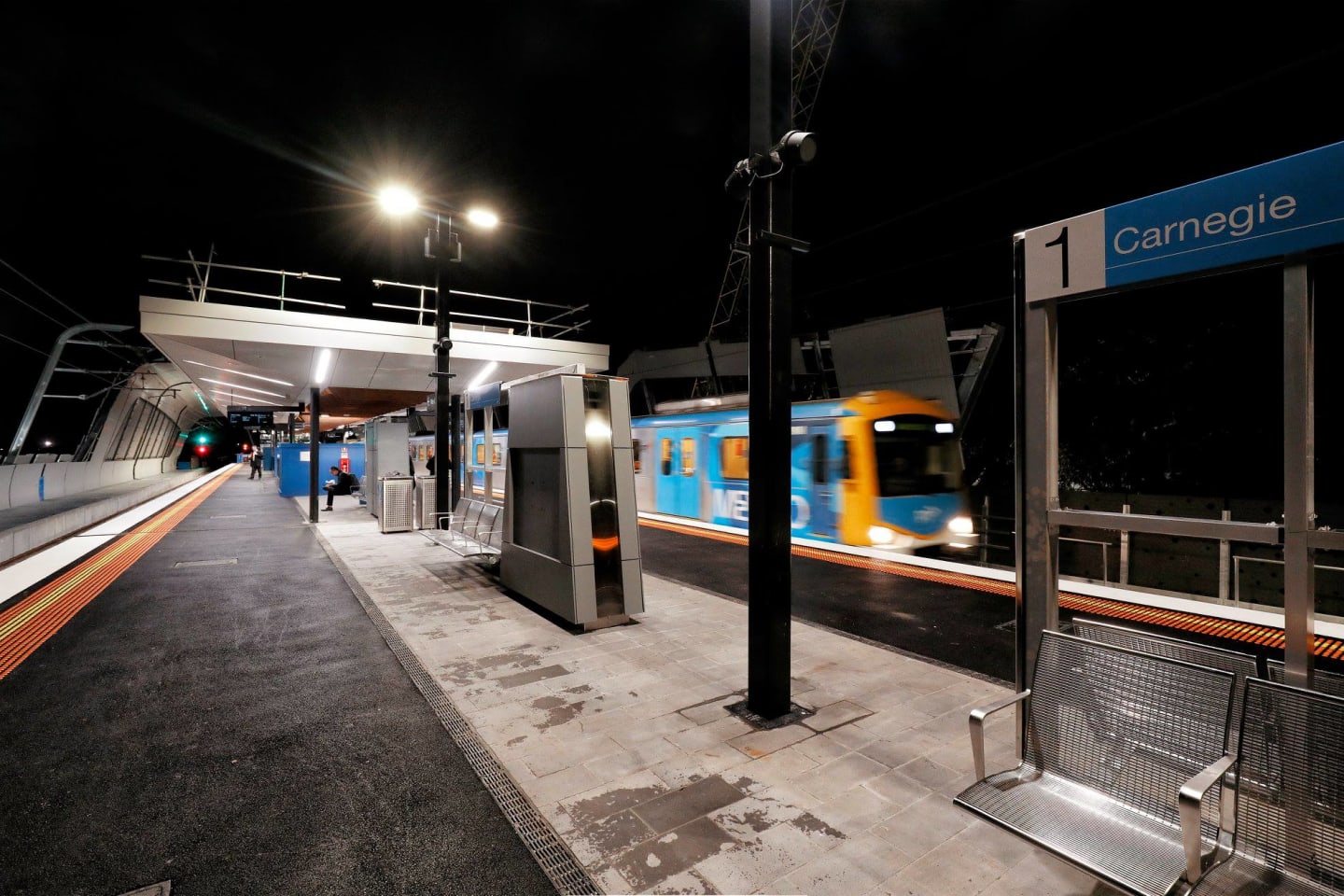Extending RFI's Airtrain concept to the south-east
It was a case of hold your horses earlier today. A state election is around the corner and Melbourne's favourite infrastructure story honeypot is producing the goods but before the media frightens the locals, a much bigger issue needs to be sorted before anyone commits to property acquisitions in the level crossing removal zones.
The Rail Futures Institute's (RFI) 'Airtrain' concept has been profiled on Urban.com.au and elsewhere and if you're reading about it for the first time, RFI is an advocate for an infrastructure future which sees a shift to rail when it comes to transporting ourselves around Melbourne.
The Airtrain concept builds on previous public studies that have identified the 'Albion corridor' - an existing rail route that sees freight and standard gauge passenger trains to Albury and Sydney run out to Sunshine then turn back to Broadmeadows - as the best route to get an airport rail line up and running in Melbourne.
RFI's difference is their focus on speed and the railway line hosting both metro and regional passenger services on its own corridor. To get speed you need to remove obstacles and the Airtrain concept sees liberal use of tunnels to do just that.
There is a joint state and federal business case being conducted as we speak and the Prime Minister is reported to have said he wants to see it get done quickly so the $5 billion the Federal Government has promised to spend on an airport rail link can be put to use. Recent reports suggest the Albion corridor via Sunshine route is the frontrunner but whether city & regional-focused Airtrain concept is what the business case has in mind will not be known until it is publicly released.
Extending the concept to the south-east
An extension of the logic contained within the Airtrain concept - new track either on the surface or in tunnels - could be one solution to providing a new corridor for express, regional and freight services to and from the south-east.
I have my colleague Laurence Dragomir to thank for the idea of centring any new fast line to the south-east on Southern Cross as he wrote back in April.
Southern Cross station would be expanded underground, to the west of the main station buildings and platforms in the Wurrndjeri Way median. There would be two levels of platforms, much like the existing City Loop stations with Melbourne Metro 2 platforms on one level and the Airtrain/South East fast line platforms on the other.
The Airtrain tracks would enter a tunnel just north of Southern Cross Station's neck (Dudley Street) and then join with the station box. The track would then continue south-southeast under the Yarra and then head directly for Caulfield where the tracks would then come back to the surface.
From Caulfield the tracks would run in parallel with the existing skyrail corridor and pass around the outside of each of the new stations - they're express tracks, no need to build platforms at them - this is a pattern that would be repeated in the other skyrail sections or on the surface through such stations such as Huntingdale, Westall, Sandown Park, Yarraman.
The only existing stations that would see new platforms (for the express tracks) are Caulfield, Clayton and Dandenong. The two express tracks would continue, built around the stations at Hallam, Narre Warren and Berwick where the four tracks would become two in a high-speed junction in between Berwick and Beaconsfield stations.
You'll need to zoom in on the map below, however back around North Melbourne, a connection to the docks would be made before the airtrain tracks head south of Dudley Street and a connection to the Frankston line would be built.
In both instances, this is to facilitate freight trains using the tunnel, specifically, the Port Rail shuttle concept: it needs a connection at the Port, the Frankston line and a connection beyond Dandenong to the Cranbourne line. This would shift freight completely away from the slower inner-city traffic.
The operations
Like with the Airtrain concept, the new tunnel and surface tracks between Caulfield and Berwick would be used for metro, regional and freight uses.
By linking the Airtrain tracks with the South-East fast line, we've created a path that could see the Bendigo and Gippsland lines 'joined' in an operational sense - a train starting in Bendigo/Echuca/Swan Hill would travel all the way through to Traralgon/Bairnsdale/Sale and vice versa.
The regional stopping pattern within metropolitan areas would be Melbourne Airport, Southern Cross, Clayton (for Monash NEIC), Dandenong, Pakenham.
The airport shuttles, which RFI says will run every 10 minutes, would simply extend all the way to Pakenham. A turnback/third platform built at Southern Cross on the Airtrain/South-east level can be used for balancing the needs of Pakenham commuter services (i.e run more trains to Pakenham in peak per hour than all the way through to the airport).
Stopping pattern for metro services would be Pakenham all stations to Dandenong, Clayton, Caulfield, Southern Cross, Sunshine, Melbourne Airport and return. Cranbourne/Dandenong/Westall services would simply operate all stations to Caulfield then to Domain into the Metro 1 tunnel.
If we use the 2013 Network Development Plan as a guide for frequencies, Pakenham & Gippsland will eventually need paths for 10x metro trains and 2x regional trains per hour in peak. The Airport line from the NDP shows 6x trains per hour - and the Airtrain concept calls for the same amount per hour - with terminating platform at Southern Cross, Pakenham metro services can increase without running trains all the way from the Airport.
With approximately 12x per hour in peak - if we use the NDP as a guide - there is both scope for increases in both metro and regional and no doubt enough space to run an hourly freight, even in peak hour.
Lead image credit: Level Crossing Removal Authority.
